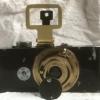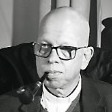Nicht immer nur Kaviar ... (English Version)
-
Recently Browsing 0 members
- No registered users viewing this page.
-
Similar Content
-
- 9,406 replies
- 870,163 views
-
- 5,524 replies
- 518,407 views
-
Colour version
By pgk,
- 4 replies
- 372 views
-
- 8 replies
- 7,123 views
-
- 18 replies
- 792 views
-





Recommended Posts
Join the conversation
You can post now and register later. If you have an account, sign in now to post with your account.
Note: Your post will require moderator approval before it will be visible.